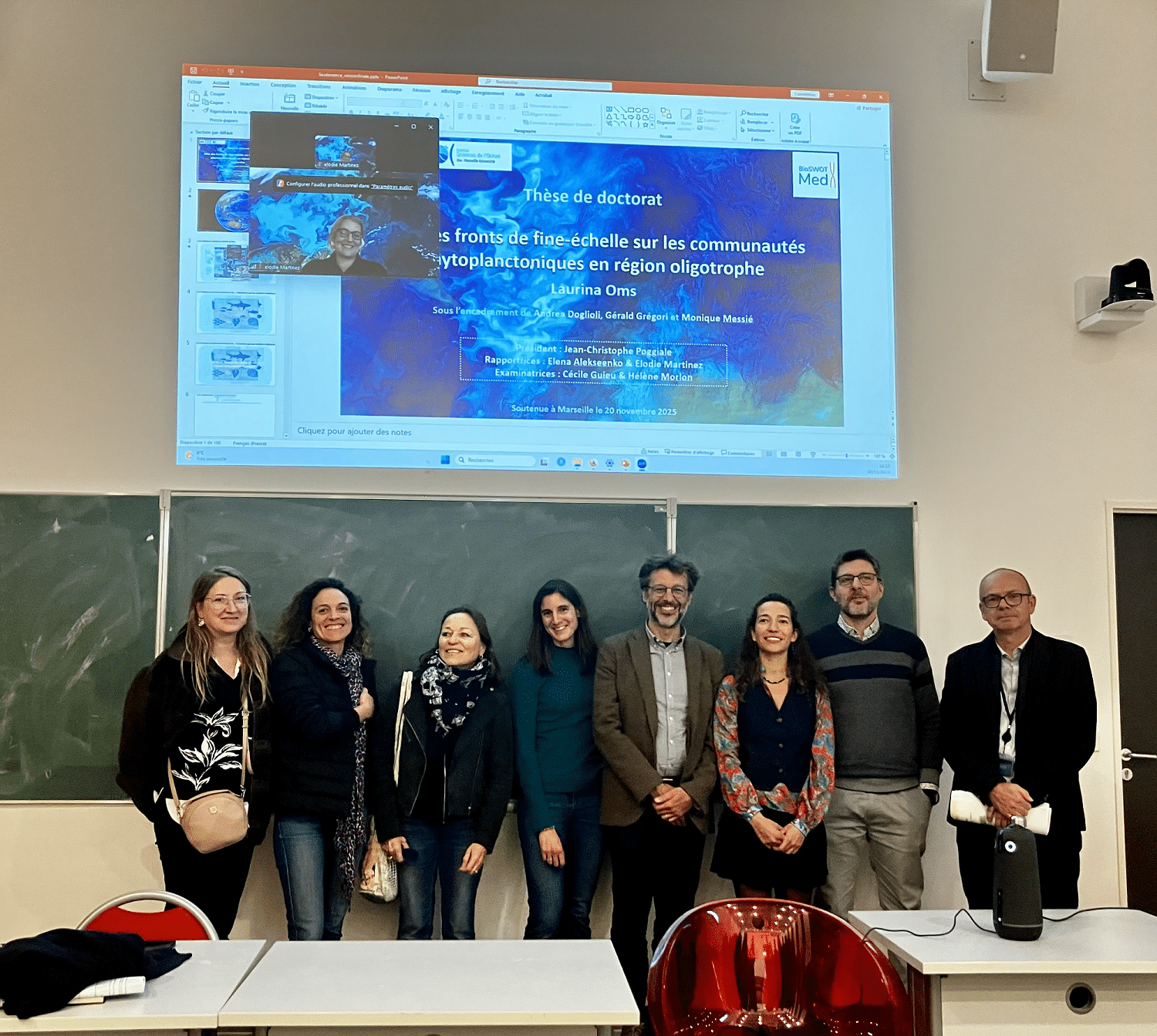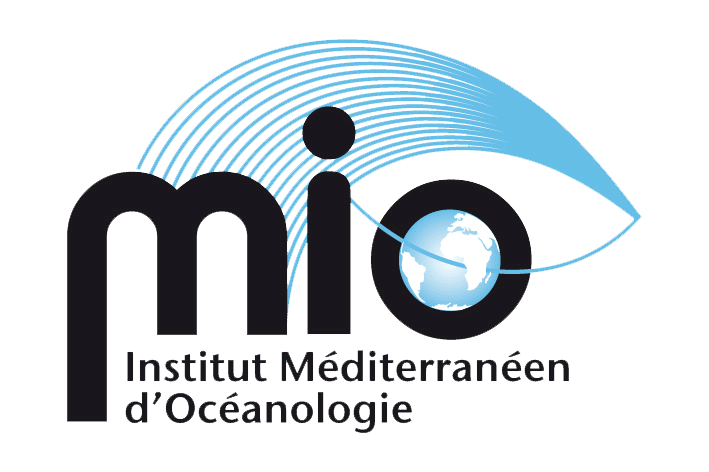Laurina Oms defended his thesis on Thursday 20 November 2025 at the OCEANOMED Amphitheatre on the following topic: Effect of fine-scale fronts on phytoplankton communities in oligotrophic regions.
Abstract
The remarkable diversity of marine phytoplankton is central to the functioning of ocean ecosystems, primary productivity and the biological pumping of carbon. Among the processes that shape this diversity, fine-scale physical structures (1-100 km, days-weeks), and in particular oceanic fronts, appear to play a major role in differentiating ecological niches, modulating primary production and community diversity. However, their study remains limited by their ephemeral nature and the difficulty of obtaining high-resolution biological observations within them, particularly in the oligotrophic and moderately energetic regions that make up most of the ocean. In this context, this thesis is part of the international initiatives linked to the launch of the SWOT satellite (2022), which will provide an unprecedented view of fine-scale physical dynamics. Two campaigns in the western Mediterranean, PROTEVSMED-SWOT (2018) and BioSWOT-Med (2023), have targeted and sampled frontal regions using an adaptive and multidisciplinary Lagrangian strategy, providing a unique dataset. Based on PROTEVSMED-SWOT, an NPZ (nutrient-phytoplankton-zooplankton) model was developed to analyse the structuring effect of fronts. The results show that phytoplankton community transitions emerge from the synergy between nutrient supply and predation, which beyond critical thresholds modifies the trophic balance and leads to spatial and temporal reorganisations of community composition. For the first time, the BioSWOT-Med campaign enabled continuous high-resolution sampling at the heart of a front in an oligotrophic region. The observations reveal the existence of a community specific to the front, characterised by an increased contribution from non-dominant groups. Coupled modelling (Lagrangian-NPZ) showed that while passive advection largely explains its presence, its relative composition results from the interaction between nutrient inputs and predation. This work provides experimental and theoretical evidence for the structuring role of oceanic fronts in oligotrophic regions, and paves the way for a more comprehensive understanding of physical-biological interactions in the SWOT era.
Members of the Jury
- Élodie Martinez, Rapporteur, IRD-LOPS, Research Director
- Elena Alekseenko, Rapporteur, CNRS-ULCO, Senior Lecturer
- Cécile Guieu, Examiner, CNRS-LOV, Research Director
- Hélène Morlon, Examiner, ENS-CNRS-IBENS, Research Director
- Jean-Christophe Poggiale, Chairman of the jury, AMU-MIO, Professor
- Andrea Doglioli, Supervisor, AMU-MIO, Senior Lecturer
- Gérald Grégori, Thesis co-supervisor, CNRS-MIO, Research Director
- Monique Messié, Co-supervisor, MBARI, Senior research specialist





